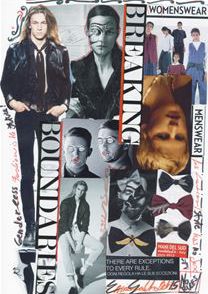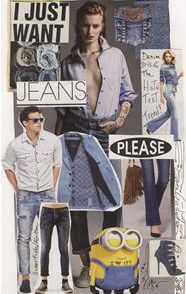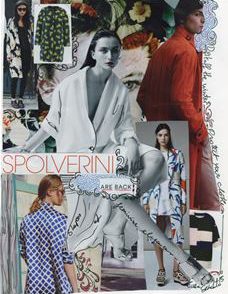The earth is sick: for some time now, human society has altered the balance of the environment. Now terms such as ‘global warming,’ ‘icecap melting’ and ‘deforestation’ have, unfortunately, become part of everyday language. Has the world of fashion remained indifferent to our planet’s agony? Certainly not!
The world of style is turning green. Today, the use of common natural fibres such as wool, organic cotton, linen, and silk, and even more innovative materials, including corn-based fabrics, bamboo, soy and paper fibres is changing the ‘color’ of fashion. Knitwear was recently revolutionized by the softness of milk fibre, and many companies are experimenting with materials as diverse as marine vegetation, cypress wood and nettles. Not only are the materials changing, but so are the philosophies behind their use. And although Italy is known the world over for its innovation in apparel design, it also has an impressive history of innovation in eco-friendly fashions.
The Textile Museum in Prato held a wonderful exhibition last spring, celebrating 2009, which was declared the International Year of Natural Fibers (IYNF) by the United Nations (UN). Entitled Green Trends: Research and Innovation in Eco-Sustainable Fabrics, the exhibit stated that ‘the great increase in interest stimulated by eco-sustainable textiles has led to the creation of a new, independent sector of commerce dedicated entirely to reducing the environmental impact of textile processes and products via innovation’. The IYNF was instituted to raise awareness and stimulate demand for natural fibres.
This growing interest in green fashions has inspired a host of events that underline the importance of investing in and supporting a more environmentally informed yet equally glamorous era of costume and design. As I mentioned in my last column (TF 118), NO was the ironic, thought-provoking title for an event staged by fashion designer and artistic director Angelo Figus and knitwear expert Nicola Miler to introduce the 2011 spring/summer trends at the Janaury 2010 Pitti Filati fair. NO had five very strong themes: no e-mail, write me a letter (with an invitation to return to handwriting); no restaurant, bake me some bread (return to the home to cook meals); no supermarket, I will grow some greens (get back in touch with the earth); no washing machine, I will do it by hand (regain a balanced relationship with water); no car, let’s go for a walk (retake possession of the space around us.)
The themes had the common goal of shaping a future that will focus on the beauty and value of simplicity, not only in every day life, but in textiles, as well.
The great pioneer of Italian design, Giorgio ‘King George’ Armani, introduced natural fibres to the Armani Jeans collection back in 1997. He invested heavily in the resurgence of hemp fibres in textile production: 1,000 acres of hemp were planted in 2002 for his eco-friendly project, called Canapaitalia (canapa = hemp), which produced the fibres the Italian fashion world currently transforms into trendy denim pants, blouses and jackets.
The world-renowned brand Costume Nationale, designed by Ennio Capasa (who was born in my hometown of Lecce), invented the ‘solar bag,’ equipped with a mini solar panel on the front that allows environmentally conscious fashionistas to recharge their cell phones and iPods as they walk around town. ‘Carmina Campus,’ designed by Ilaria Venturini Fendi, is a stylish and edgy bag collection that offers support to women living in impoverished communities.
But ‘eco’ doesn’t mean casual. The latest collections demonstrate that eco-fashion is just as exclusive and elegant as any other. The high fashion week in the Italian capital, Alta Roma, took very seriously the ‘ethical fashion’ project, which seeks to promote the production of high-value products in third world countries.
The new Cittadellarte laboratory, housed in a former wool mill in Biella, organizes workshops for young fashion designers from all over the world to encourage them to create beautiful innovative ethical clothes, thus instilling these new concepts in the next generation of designers.
Italy is not only willing to fight this environmental battle, but seems ready to win it!
The term ‘ethical fashion’ comprises four characteristics: the environment, social values, transparency and the preservation of traditional handicraft techniques.
Coming next: Florentine brands and some ethical fashion locations in the city.







